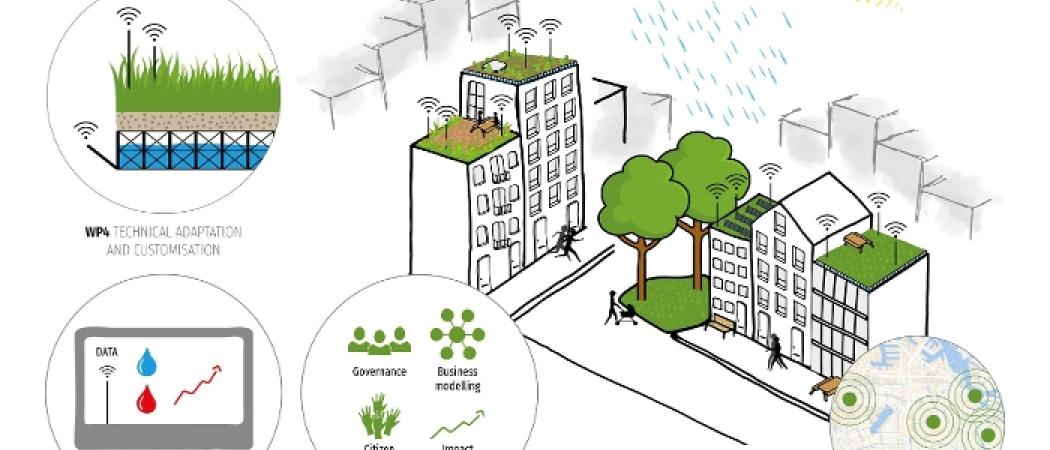European subsidy worth € 4.8 million secured for 10,000 m2 of rooftops

Amsterdam will install smart ‘blue-green’ roofs on social housing buildings. These roofs allow for extra (blue) water to be stored beneath the green surface, better protecting the homes and their environment against extreme rainfall or heat and drought. On 10 October, it was announced that this project won a € 4.8 million European subsidy for innovations related to climate change adaptation.
The blue-green roofs have an additional benefit compared to green roofs in that they can store much more water. This means that the evaporation process takes longer during periods of heat and drought, resulting in temperatures remaining lower both in the homes and in the surrounding neighbourhood. This also allows a wider variety of plants to grow, increasing biodiversity.
Flooding
AUAS is contributing to this project in a number of ways. Firstly, AUAS will look into the effect of the blue-green roofs on the city. To what extent do they reduce flooding? Are there positive effects on heat stress and liveability? This research is being carried out by Urban Technology under the leadership of Professor Jeroen Kluck. “Blue or green roofs help cool the city through water evaporation, but how large the effects are and what exactly the benefits are in terms of cooling is something we have a lot of questions about and something we aim to make more concrete," says Kluck.
AUAS is also examining the feasibility of the project. How can we organise blue-green roofs on a large scale? What is the role of the residents, the government, the social housing organisation, the Waternet water authority and other interested parties? On the basis of a costs-benefits analysis and an impact measurement, we will determine the value of the project to the city. We will look at how we can make blue-green roofs financially feasible in the city, both in terms of organisation and finance. This research will be carried out by Urban Management under the leadership of Professor Willem van Winden.
Neighbourhoods
In the next three years, these smart blue-green roofs will be installed on 10,000 m2 of social housing rooftops at four locations in Amsterdam: the Bellamy neighbourhood, Geuzenveld, Oosterpark and Kattenburg. These locations have been chosen because these neighbourhoods have an increased risk of flooding and related damage in the event of extreme rainfall, and there are sufficient suitable roofs on homes owned by social housing organisations that are in need of replacement.
Weather forecast
An innovative aspect of this trial is the use of sensors, which enable the roof to retain or discharge water based on the weather forecast. The smart roofs are linked together in a network, allowing a new kind of water management to be realised at the neighbourhood and building level.
Project ‘RESILIO’
This project goes by the name RESILIO, which stands for ‘Resilience nEtwork of Smart Innovative cLImate-adapative rOoftops’. It is a cooperation between the City of Amsterdam, Waternet, Polderdak, Rooftop Revolution, AUAS, VU, Stadgenoot, Ymere, De Key and Consolidated. The RESILIO project has received this funding from the UIA (Urban Innovative Actions) programme of the European Union. Each year, the UIA programme offers a subsidy for innovative pilot projects in different areas.
This release was first published 24 October 2018 by the Amsterdam University of Applied Sciences





 A unique international forum for public research organisations and companies to connect their external engagement with strategic interests around their R&D system.
A unique international forum for public research organisations and companies to connect their external engagement with strategic interests around their R&D system.